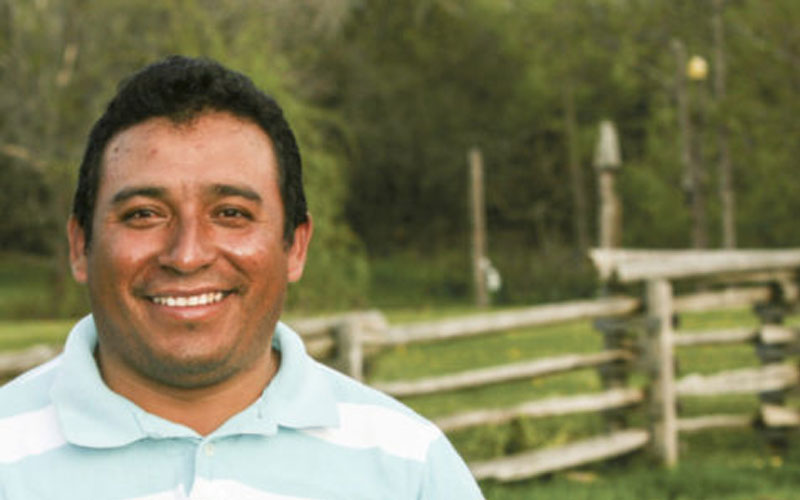County News
Visitor


Carlos Vasquez Torres in Hillier.
Working in Hillier to provide employment and opportunity at home in the Yucatan
Carlos Vasquez Torres isn’t wild about the cold mornings in Hillier. He knows hot. He understands it. He can work in the heat. Cold is different.
Home is in Dzilam Gonzalez, a town of about 6,000 on the northern edge of the Yucatan Peninsula—a four-hour drive west of Cancun. The temperature in Dzilam rarely dips below 20 degrees Celsius. Fortunately, the breeze off the Gulf of Mexico tends to moderate the oppressive heat—averaging about 30 degrees in the warmer months.
Carlos arrived in Hillier on April 1, his fourth season working in Canada. He still hasn’t adapted to the cold mornings in Hillier, with frost and sometimes snow greeting him at 7 a.m.
Dzilam Gonzalez was once a port town, but when the Gulf of Mexico receded, it left Carlos’ home about 13 kilometres inland. The lowland region is mostly flat without rivers or lakes, just a few metres above sea level. The geology of most of the Yucatan Peninsula is karst—meaning the bedrock is an unstable mix of limestone, dolomite and water. Sinkholes, known as cenotes, abound in the landscape, providing access to fresh water for homes and agriculture.
Carlos and his dad, like most in the region, are farmers, coaxing corn, onions and habaneros from the thin soil. With the income Carlos earns in Canada, he can employ several workers at home. In this way, he is gradually expanding the business.
“It is good for our economy,” says Carlos. “It’s good for my community.”
There is little opportunity beyond farming in Dzilam Gonzalez, and fewer prospects. Nearly a tenth of the male population of the region travels north each summer to work.
“There is not much economy at home,” says Carlos. “Not a lot of work. It is a common problem.”
It is hard being away from them for seven months of the year. But Carlos believes this is the path to a brighter future for his family. Like Angel, he wants his kids to benefit from a good education and pursue opportunities that were unavailable to him.
Most evenings, Carlos calls or WhatsApps (a voice messaging service) his wife Angelica, his 13-yearold daughter Marianne and 6-year-old boy Esau.
In Hillier, Carlos leads a simple life—mostly working. He likes to cook. On rainy days, he goes to the bank and the mall in Belleville. His brother-in-law is working in Meaford this year—but they won’t see each other until they return to the Yucatan.
Mayan culture and language remains pervasive in his home region—with nearly a quarter of Dzilam Gonzalez residents speaking the indigenous Mayan language—though nearly all speak Spanish as well.
Though just a few hours from the popular Mayan Riviera—Cancun to Playa del Carmen and Tulum— Dzilam Gonzalez isn’t a tourist destination. Much of the coastal region is swamp and marshland populated mostly by pink flamingos and pelicans.
Nearly a quarter of the homes in Dzilam Gonzalez consist of a single room—though almost all have electricity and public water and wastewater system access.
Carlos appreciates the opportunity he has been given to work in Canada and says he has been treated well by everyone he has met. But there is no confusion about where home is—even though for the past four years, he has lived more of his life in Hillier than Dzilam Gonzalez.
Though his body is in Hillier, his heart and mind remain with his family in the Yucatan. Asked if he would feel better about being away if there were more opportunities to socialize with his Hillier neighbours, Carlos is frank without seeking to offend the questioner.
“No, “he said. “I don’t think it would make a difference.”
He is here to do a job— to make a better future for his wife and kids. He enjoys the people he works with and those he has met—they’ve all been good experiences. But home is 5,000 kilometres away, where the breeze flows across the flat land. Where a civilization developed and created a written language, mathematics, art, architecture and understanding of the stars 3,000 years before Europeans arrived

Comments (0)